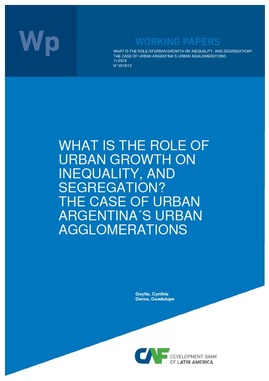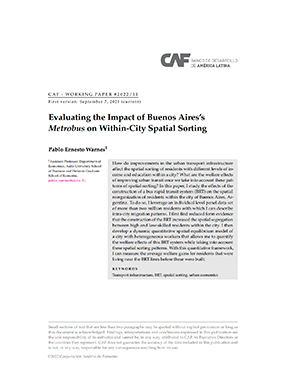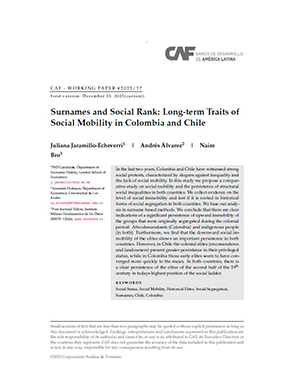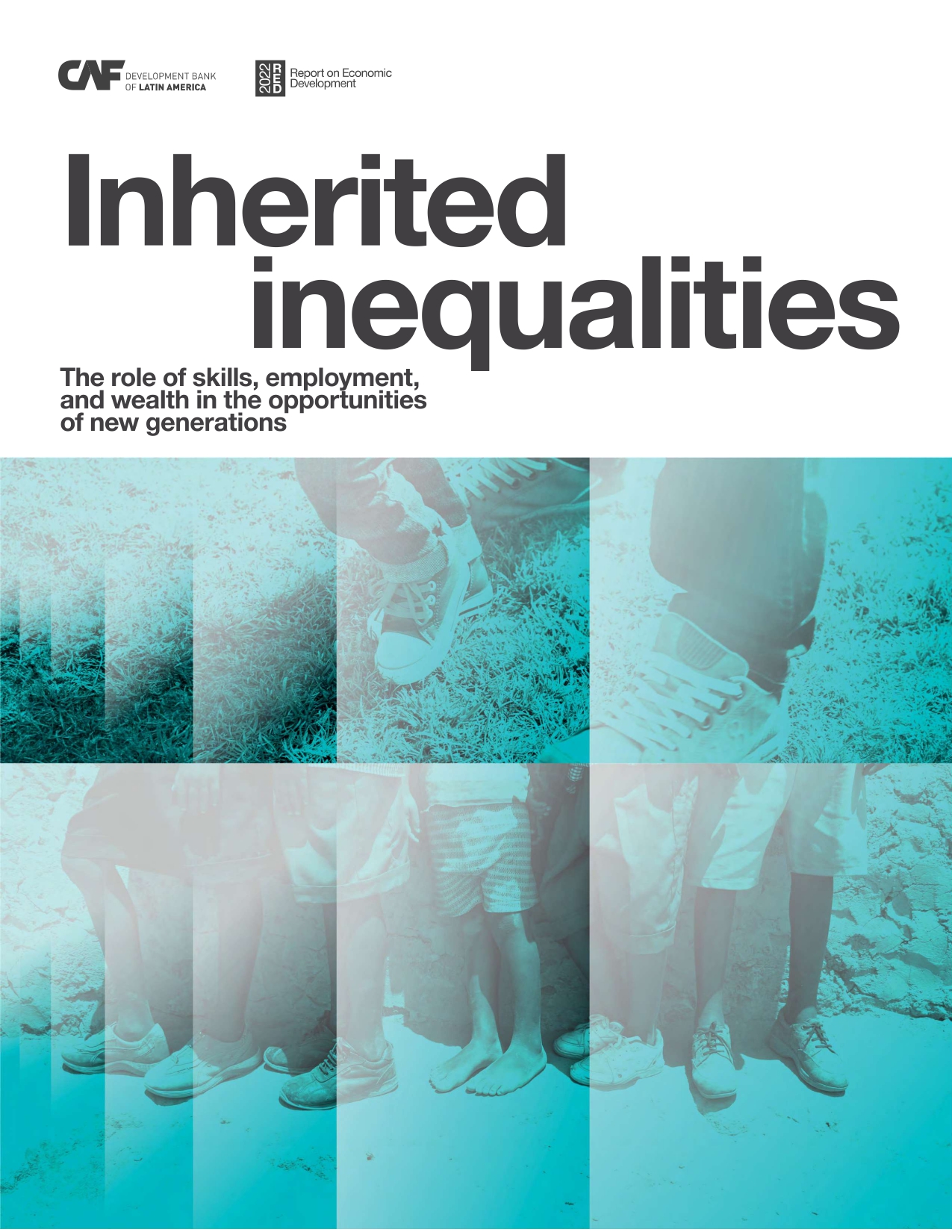Mostrar el registro sencillo del ítem
What is the Role of Urban Growth on Inequality, and Segregation? The Case of Urban Argentina´s Urban Agglomerations
| dc.contributor.author | Goytia, Cynthia | |
| dc.contributor.author | Dorna, Guadalupe | |
| dc.coverage.spatial | Argentina | en_US |
| dc.date.accessioned | 2016-11-23T19:11:46Z | |
| dc.date.available | 2016-11-23T19:11:46Z | |
| dc.date.issued | 2016-11 | |
| dc.identifier.citation | Goytia, C., & Dorna, G. (2016, November). What is the Role of Urban Growth on Inequality, and Segregation? The Case of Urban Argentina´s Urban Agglomerations. Working paper;N° 2016/12, Buenos Aires: CAF. Retrieved from https://scioteca.caf.com/handle/123456789/972 | en_GB |
| dc.identifier.uri | https://scioteca.caf.com/handle/123456789/972 | |
| dc.description.tableofcontents | We analyze the relationship between urban sprawl and changing patterns of inequality and segregation in metropolitan areas of Argentina. The existing literature has endeavored to study the determinants of the expansion of cities, but less attention has been placed in understanding the effects of this sprawl on the livelihood of the people that live in them. Understanding whether different patterns of urban extension determine both segregation and inequality is extremely relevant in the context of fast growing urban agglomerates of Latin American countries. Among other findings, we provide evidence that there is segregation of the poor and not of the rich in all urban agglomerates but in Greater Buenos Aires, where segregation of the affluent, not the poor, prevails in the areas of greater informal urban expansion, measured by the extension of informal settlements. Yet, not all the patterns of urban development and built-up growth have the same effect. More leapfrog appears to explain greater segregation -particularly of the poor- while both infill and extension are positively related to more homogeneous urban agglomerations. This means that the most disadvantaged are more evenly distributed in agglomerations that have not seen much of their sprawl due to discontinue urban expansion of their borders. Finally, we also find a positive association between more unequal municipalities and greater slum expansions. The causality of this relationship is unclear and further analysis could be promising. It might be the case that more unequal municipalities allow for institutional environments in which slums can grow faster. Or it might well be that places which have experienced more accelerated slum growth have become more unequal because of the arrival of new families that accentuates such disparities. | en_US |
| dc.language.iso | en | en_US |
| dc.publisher | CAF | en_US |
| dc.relation.ispartofseries | Working paper;N° 2016/12 | |
| dc.rights | CC-BY-NC | es_ES |
| dc.rights.uri | http://creativecommons.org/licenses/by-nc/4.0/ | es_ES |
| dc.subject | Ciudades | en_US |
| dc.subject | Desarrollo social | en_US |
| dc.subject | Desarrollo urbano | en_US |
| dc.subject | Economía | en_US |
| dc.subject | Equidad e inclusión social | en_US |
| dc.subject | Investigación socioeconómica | en_US |
| dc.subject | Pobreza | en_US |
| dc.title | What is the Role of Urban Growth on Inequality, and Segregation? The Case of Urban Argentina´s Urban Agglomerations | en_US |
| dc.type | workingPaper | en_US |
| dc.publisher.city | Buenos Aires | en_US |
Ficheros en el ítem
Este ítem aparece en la(s) siguiente(s) colección(ones)
-
6.1 Documentos de trabajo en investigación socioeconómica
En esta colección se encuentran los documentos de trabajo sobre temas económicos y sociales prioritarios para la región.






